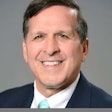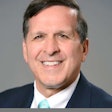
Hygienists think they communicate every day, and yet when asked what is the most challenging thing about dentistry, many of them say, "Team communication!"
Communication is a complex and delicate process. To say one communicates with others and then still complains about the level of miscommunication says something about the kind of communication occurring and its effectiveness.
3 frustrations
Moving into 2018, let's all make a commitment to changing our communication strategies so we can address these top three frustrations hygienists share.
 Jen Butler, MEd.
Jen Butler, MEd.1. How can communication work when I'm in different offices each week?
Working in a variety of offices requires a hygienist to be highly versatile in their communication styles. Some doctors are direct and assertive, others passive and introspective, and still others are quiet and noncommunicative.
A hygienist has to be able to navigate through a multitude of conversations with their clinical partner (yes, the doctor) to offer comprehensive and exceptional patient care. It's not always easy. It is always necessary.
To be versatile in communication, consider the following:
- Be mindful of body language. Crossed arms, looking away, pace of speech, and tone of voice offers some insight as to intention and meaning of a message. But don't only rely on that.
- Ask questions first. Misunderstandings and miscommunication happen when people assume they know what someone's intentions are and refrain from asking follow-up questions. If you want to know what someone means by their remarks, body language or tone, ask. So not to offend, start your questions with "I'm curious ..." or "What do you mean by ... ."
- Don't be offended by "Why?" Doctors ask themselves why all day long. It's their go-to tool for problem-solving. It's no wonder when they ask why questions of their team. The word "why" as a question requires a person to justify. For example, "Why did you think that patient needed scaling and root planing?" or "Why did you tell the front desk to put that patient on your schedule?"
Even in the sweetest and softest of tones, the message puts the listener on the defensive. With most doctors being analytical thinkers, them asking why is more about problem-solving and seeking to understand than wanting to offend.
2. How do you approach the doctor with a concern?
Issues are going to come up between the hygienist and doctor. That's normal for two people working together. What's imperative is that the concern doesn't turn into something greater, like a problem or rift.
To address it early so you can keep it small and manageable, keep the following in mind:
- Think it through. There are several questions that are important to think through before you approach the doctor with concerns. This list includes questions such as "Why is this a concern?" "Why bring it up now?" "What do you want to happen?" and "What don't you want to happen?" among others.
- Set parameters. The most productive conversations are ones with parameters. For example, set time limits on the length of the conversation; what happens if you get off track or interrupted; if all parties felt great after having the conversation, what would be addressed or satisfied; and what does the follow-up look like.
- Resolve one at a time. Dumping everything out onto the table makes it difficult to focus and problem-solve because of the sheer mass of emotions attached to each concern is often too much to manage.
Keep everything focused by discussing and finding solutions to one concern at a time.
3. How do you settle a conflict?
When people work together, there is going to be conflict; this does not mean there has to be confrontation, however. And as some would be surprised, conflict is extremely healthy in any kind of relationship. Relationships actually deepen as a result of resolving conflict if done correctly.
“There is an opportunity to have this necessary duality of providers turn into a symbiotic partnership, with the end result being highly profitable and exceptional for doctor, hygienist, and patient.”
To have healthy conflict, follow these tips:
- Name the problem. Consider this: What we often think is the problem actually isn't the issue at all. The problem is typically a bit deeper. When you fix the right problem, everything else falls away.
- Acknowledge personal contributions. Conflict occurs between two or more people. Which means somehow you are part of the issue. Before approaching someone to settle any conflict, be sure you know what role you've played, what you need to change, and possibly what you might need to apologize for.
- Know what you want (what you really, really want). Looking to resolve conflict without a clear direction of what your ideal outcome is wastes precious office time. Having a resolution conversation without outcomes really is just a gripe fest and a waste of precious, office time.
The clinical and business needs between a hygienist and doctor aren't going away. There is an opportunity to have this necessary duality of providers turn into a symbiotic partnership, with the end result being highly profitable and exceptional for doctor, hygienist, and patient.
Jen Butler, MEd, is the CEO and founder of JB Partners and has been working in the area of stress management and resiliency training for more than 25 years. Learn about her services at www.jenbutlerpartners.com, or contact her at [email protected].
The comments and observations expressed herein do not necessarily reflect the opinions of DrBicuspid.com, nor should they be construed as an endorsement or admonishment of any particular idea, vendor, or organization.



















